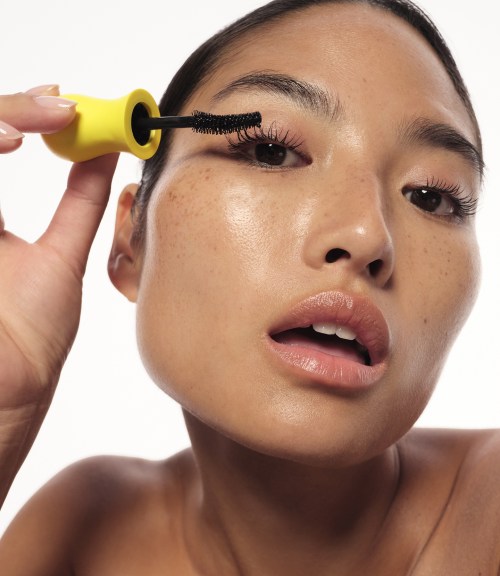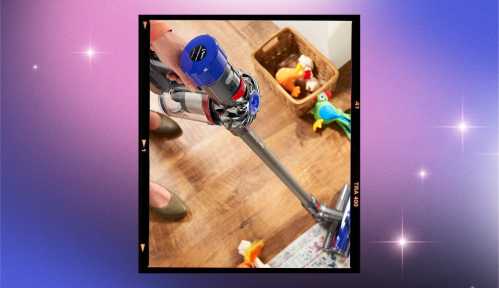If someone asked what you had for breakfast, you might imagine maple syrup drizzled on a stack of pancakes or the satisfying crunch of granola topped with fruit. Perhaps you remember these details because breakfast wasn’t that long ago, or you tend to eat these foods regularly. For people with hyperphantasia, recollections of breakfasts from months or even years ago can be so vivid that it’s almost like having actual pancakes right in front of them.
Experts in This Article
a New York-based psychologist and director of Nobile Psychology
psychology professor and founder of The Academy of Cognitive and Behavioral Neuroscience
sleep doctor and assistant clinical professor at Keck School of Medicine of USC
While you may have heard of synesthesia—a neurological condition that stimulates the five senses—chances are you’re less familiar with hyperphantasia. According to a 2024 review1, roughly three percent of the world’s population has hyperphantasia, which is the “condition of having an extremely vivid and intense imagination,” says psychologist Hayley Nelson, PhD, associate professor of psychology at Delaware County Community College and founder of The Academy of Cognitive and Behavioral Neuroscience. “This heightened visual imagination sets hyperphantasia apart from typical imagination, making it a unique and fascinating phenomenon in cognitive neuroscience,” says Dr. Nelson.
At this point, you might be wondering if you have hyperphantasia. Here, we asked neuroscience experts to explain the symptoms and causes of hyperphantasia, as well as the potential benefits and drawbacks of having a photorealistic memory.
What is hyperphantasia?
The brain’s processing abilities are situated on a continuum with hyperphantasia at one end and a condition called aphantasia—the absence of mental visualization—on the other end. Put simply, hyperphantasia occurs when “individuals experience exceptionally vivid and detailed mental imagery,” says psychologist Catherine Nobile, PsyD, director of Nobile Psychology. People with hyperphantasia have an extremely detailed imagination and can picture objects or scenarios so clearly that it’s like they’re actually experiencing them in real time. These images can be “so vivid, blurring the lines between imagination and perception,” Dr. Nelson says.
“Together, these symptoms combine to give individuals with hyperphantasia a uniquely rich and detailed inner world.” —Catherine Nobile, PsyD, director of Nobile Psychology
A person with hyperphantasia can recall visual details like color, texture, and movement with greater ease and accuracy than someone without this condition. This vividness may even extend beyond vision, affecting other senses including sound, smell, taste, and touch. For example, someone with hyperphantasia might see a person cooking pasta on TV and be reminded of childhood visits to their grandparents’ house with all the smells, tastes, and sounds that accompany this visual memory. This enhanced memory for visual details even extends to dreams, which tend to be colorful, detailed, and realistic. People with this condition also tend to be highly creative, often channeling their abilities toward artistic pursuits. “Together, these symptoms combine to give individuals with hyperphantasia a uniquely rich and detailed inner world,” Dr. Nobile says.
What causes hyperphantasia?
Hyperphantasia is associated with “heightened activity in parts of the brain that handle sensory information and imagination, like the visual cortex,” says Raj Dasgupta, MD, an ABIM quadruple board-certified physician specializing in internal medicine, pulmonology, critical care, and sleep medicine and medical reviewer for NCOA. Another area of increased activity is the prefrontal cortex, which is involved in complex cognitive functions like concentration and decision-making.
Scientifically speaking, neuroimaging studies suggest that increased connectivity and activity in these regions allow people with hyperphantasia to create and manipulate mental images. For instance, a 2021 study2 of visual imagery vividness extremes found that hyperphantasic participants—yes, “fantastic” is basically in the name—displayed stronger connectivity between the prefrontal cortex and visual network compared to those with aphantasia. It appears that, among people with hyperphantasia, the pathways responsible for memory and visual processing are more effective at communicating with each other.
In other words, this increased neural connectivity allows them to “recall and combine stored visual information more easily,” Dr. Nobile says. “Chemicals in the brain, such as dopamine and norepinephrine, which influence attention and excitement, may also help these brain areas work more efficiently.” Because aphantasia tends to run in families and is associated with autism, as exemplified by a 2020 study3, there’s likely a genetic component to visual imagery vividness extremes, Dr. Dasgupta says. So, hyperphantasia could run in the family!
How do you test for hyperphantasia?
It’s no coincidence this story began with a question about breakfast. Describing what you ate for breakfast was one of the earliest tests of visual imagination. The test was developed by explorer and eugenicist Francis Galton in the 1800s. Based on the participants’ ability to recall details about their breakfast, Galton would arrange them on a scale from lacking imagination (aphantasia) to having highly accurate visualizations (hyperphantasia).
Since then, researchers have developed self-report questionnaires and visualization tasks to test for hyperphantasia. The Vividness of Visual Imagery Questionnaire asks individuals to picture certain scenarios and rate the clarity and vividness of their mental images. In addition, brain imaging techniques like functional MRI or PET scans are “used to observe brain activity and connectivity associated with vivid mental imagery, providing further insights into the neural basis of hyperphantasia,” Dr. Nelson adds.
Another method to assess hyperphantasia is mental rotation which entails asking participants to rotate objects in their mind and determine if they match a particular image. People with hyperphantasia often excel at these tasks. Researchers and clinicians may also ask participants to draw or describe scenes for comparison with the original image.
Is hyperphantasia the same as having a photorealistic memory?
Hyperphantasia and eidetic memory are distinct phenomena. Eidetic memory is the ability to “recall images or sounds with high accuracy and detail after seeing them briefly,” Dr. Dasgupta says. For example, an individual with an eidetic memory can look at a photo of wildlife or a building’s façade for a few minutes and recount details that someone else might miss—like the number of tiles lining the face of the building or how many whiskers the tiger in the photograph had.
An eidetic memory is “centered on the precise retrieval of visual or auditory information from memory,” Dr. Nobile adds. In contrast, hyperphantasia refers to the generation of vivid and detailed mental imagery from your imagination. So, while they both involve vivid visual experiences, “hyperphantasia is about creating images, whereas eidetic memory is about retaining and recalling them accurately,” Dr. Nelson explains. In other words, hyperphantasia is having the ability to see your birthday cake from when you were seven years old as if your mom just frosted it and it’s waiting for you on the kitchen table; meanwhile, having an eidetic memory is not necessarily being able to see the cake but having the ability to describe exactly how many sprinkles were on top and what shade each one was.
Is it good to have a strong imagination?
Having an exceptionally vivid imagination can foster enhanced creativity, Dr. Dasgupta says. This can be beneficial in fields that involve imaginative thinking such as literature, design, and science. People with an overactive imagination often have “a knack for generating innovative ideas, thinking outside the box, and envisioning unique solutions to problems,” Dr. Nobile adds. Their enhanced visualization skills can aid in problem-solving because they’re able to mentally simulate scenarios and outcomes. Another potential advantage is their emotional resilience. They can use their imagination to provide an escape from stress and anxiety.
On the other hand, there can be a downside to hyperphantasia. Someone with an extremely vivid or overactive imagination may be distracted easily and have trouble focusing on everyday tasks, Dr. Nelson says. They might become so absorbed in their thoughts and daydreams that they have difficulty distinguishing between fantasy and reality. If their visualizations tend to be negative, this can lead to heightened stress, anxiety, or even paranoia, Dr. Nobile adds. Moreover, someone with hyperphantasia may have unrealistic expectations of themselves or others which can affect their interpersonal relationships. With increased self-awareness and coping strategies, people with hyperphantasia can learn to use their imagination in healthy and productive ways. This can look like practicing mindfulness and grounding exercises and investing in creative outlets such as drawing, photography, or sculpting.
There are numerous auditory, visual, spatial, emotional, and gustatory tests to help determine whether you have hyperphantasia. If you’re truly wondering whether you have the condition, though, start with the questionnaire linked above and do some research—your imagination might be more powerful than you realize.
- ↩︎
Zeman, Adam. “Aphantasia and Hyperphantasia: Exploring Imagery Vividness Extremes.” Trends in Cognitive Sciences (Regular Ed.), vol. 28, no. 5, 1 Mar. 2024, https://doi.org/10.1016/j.tics.2024.02.007.
- Milton, Fraser et al. “Behavioral and Neural Signatures of Visual Imagery Vividness Extremes: Aphantasia versus Hyperphantasia.” Cerebral cortex communications vol. 2,2 tgab035. 5 May. 2021, doi:10.1093/texcom/tgab035↩︎
- ↩︎
Zeman, Adam, et al. “Phantasia–the Psychological Significance of Lifelong Visual Imagery Vividness Extremes.” Cortex, vol. 130, no. 130, Sept. 2020, pp. 426–440, https://doi.org/10.1016/j.cortex.2020.04.003.
Sign Up for Our Daily Newsletter
Get all the latest in wellness, trends, food, fitness, beauty, and more delivered right to your inbox.
Got it, you've been added to our email list.











